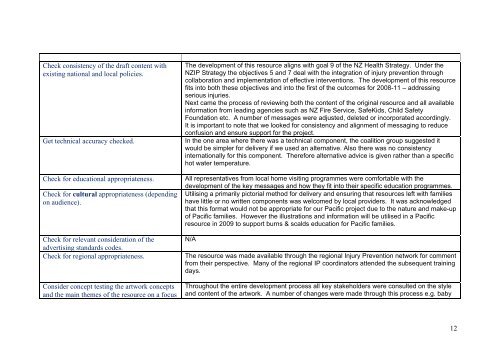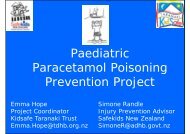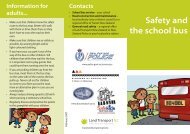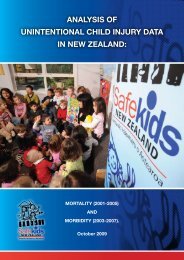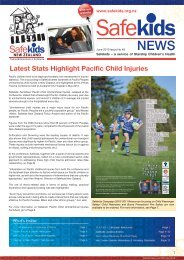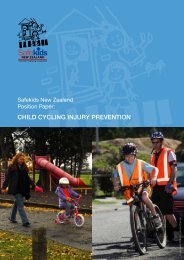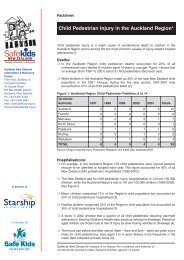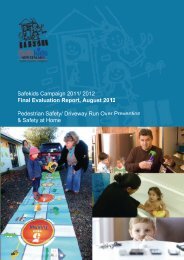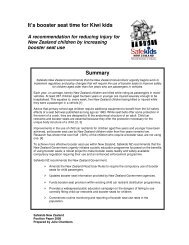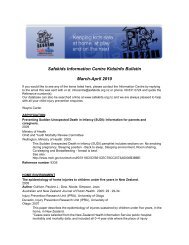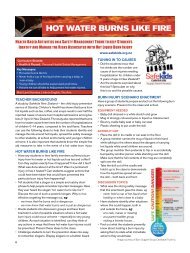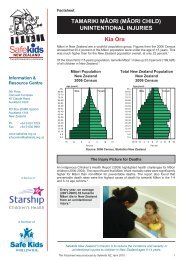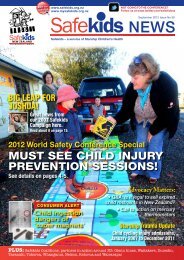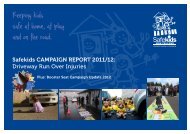Safekids Campaign 2010/11: Fire Safety/ Burns Prevention Contents
Safekids Campaign 2010/11: Fire Safety/ Burns Prevention Contents
Safekids Campaign 2010/11: Fire Safety/ Burns Prevention Contents
Create successful ePaper yourself
Turn your PDF publications into a flip-book with our unique Google optimized e-Paper software.
Check consistency of the draft content with<br />
existing national and local policies.<br />
Get technical accuracy checked.<br />
Check for educational appropriateness.<br />
Check for cultural appropriateness (depending<br />
on audience).<br />
Check for relevant consideration of the<br />
advertising standards codes.<br />
Check for regional appropriateness.<br />
Consider concept testing the artwork concepts<br />
and the main themes of the resource on a focus<br />
The development of this resource aligns with goal 9 of the NZ Health Strategy. Under the<br />
NZIP Strategy the objectives 5 and 7 deal with the integration of injury prevention through<br />
collaboration and implementation of effective interventions. The development of this resource<br />
fits into both these objectives and into the first of the outcomes for 2008-<strong>11</strong> – addressing<br />
serious injuries.<br />
Next came the process of reviewing both the content of the original resource and all available<br />
information from leading agencies such as NZ <strong>Fire</strong> Service, SafeKids, Child <strong>Safety</strong><br />
Foundation etc. A number of messages were adjusted, deleted or incorporated accordingly.<br />
It is important to note that we looked for consistency and alignment of messaging to reduce<br />
confusion and ensure support for the project.<br />
In the one area where there was a technical component, the coalition group suggested it<br />
would be simpler for delivery if we used an alternative. Also there was no consistency<br />
internationally for this component. Therefore alternative advice is given rather than a specific<br />
hot water temperature.<br />
All representatives from local home visiting programmes were comfortable with the<br />
development of the key messages and how they fit into their specific education programmes.<br />
Utilising a primarily pictorial method for delivery and ensuring that resources left with families<br />
have little or no written components was welcomed by local providers. It was acknowledged<br />
that this format would not be appropriate for our Pacific project due to the nature and make-up<br />
of Pacific families. However the illustrations and information will be utilised in a Pacific<br />
resource in 2009 to support burns & scalds education for Pacific families.<br />
N/A<br />
The resource was made available through the regional Injury <strong>Prevention</strong> network for comment<br />
from their perspective. Many of the regional IP coordinators attended the subsequent training<br />
days.<br />
Throughout the entire development process all key stakeholders were consulted on the style<br />
and content of the artwork. A number of changes were made through this process e.g. baby<br />
12


